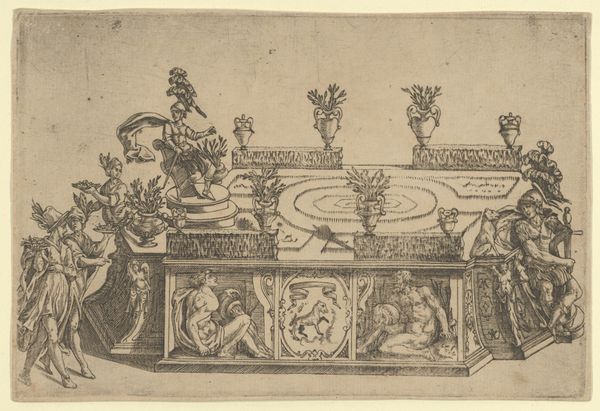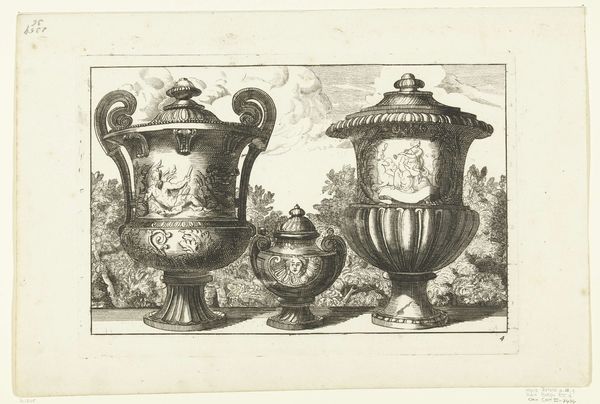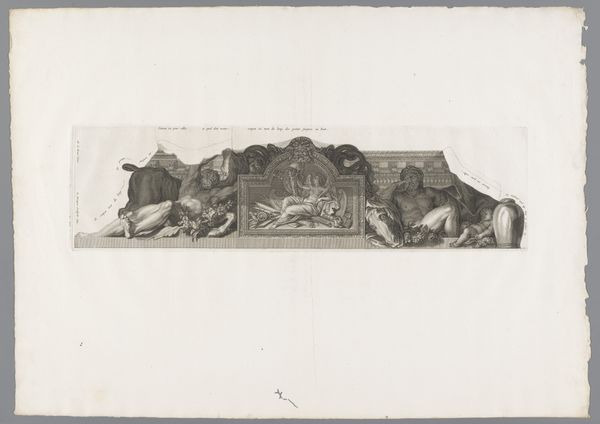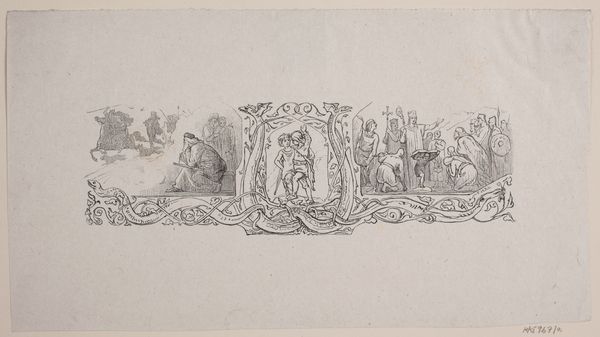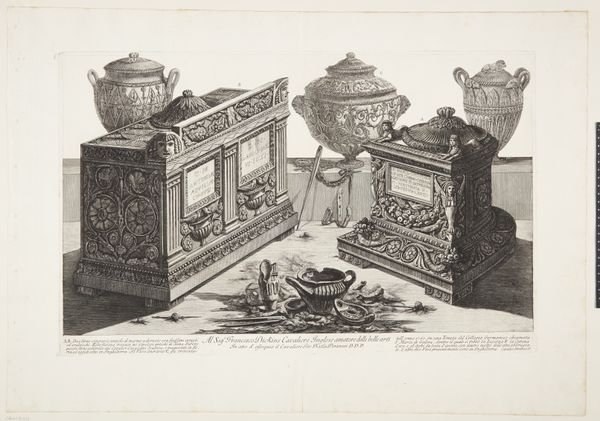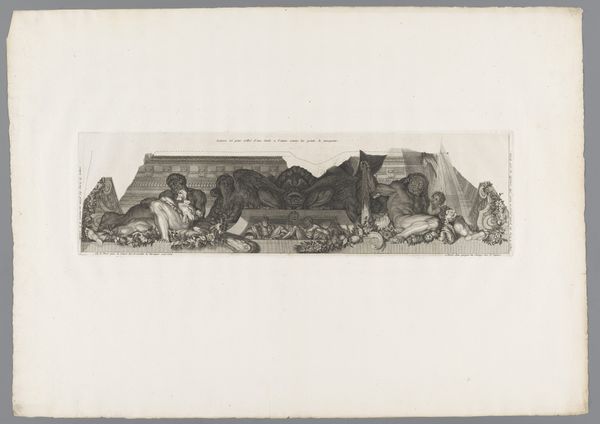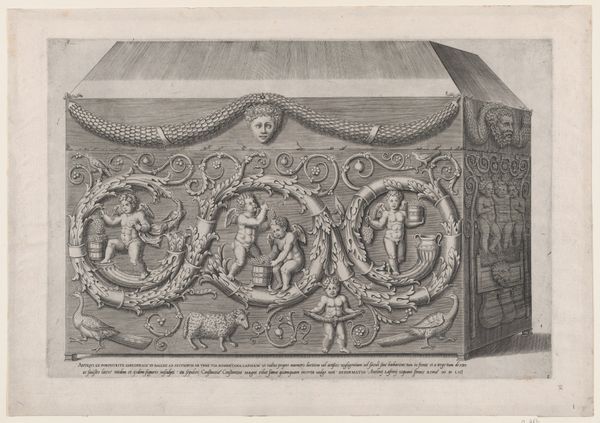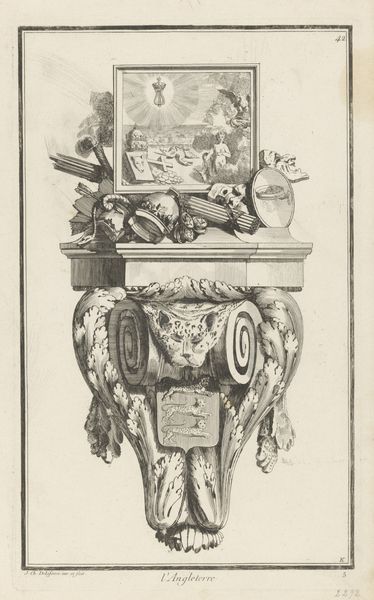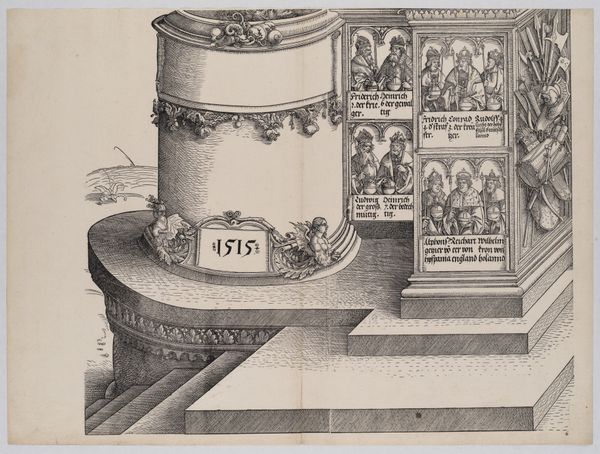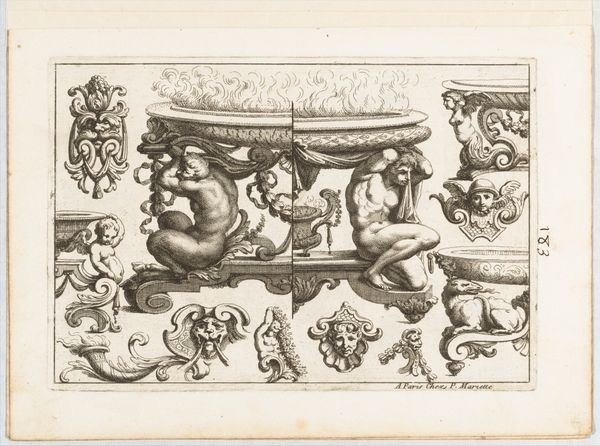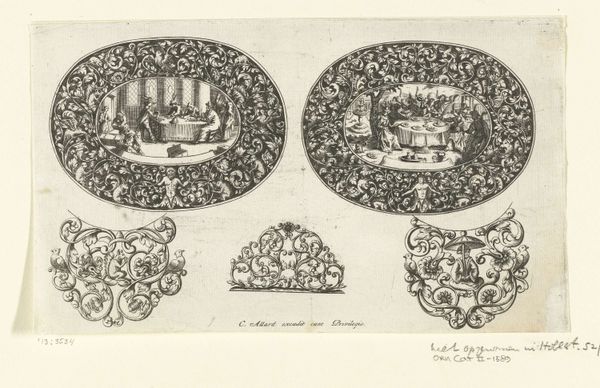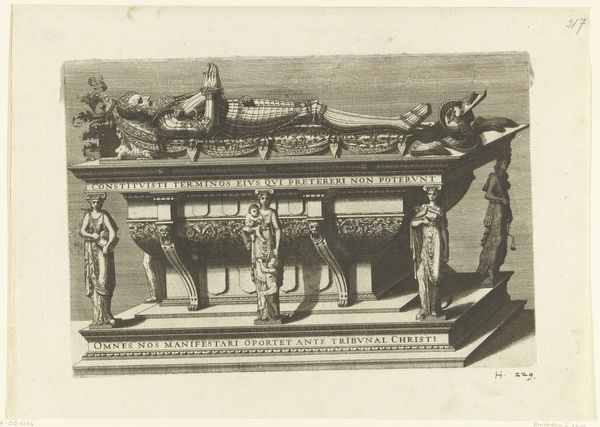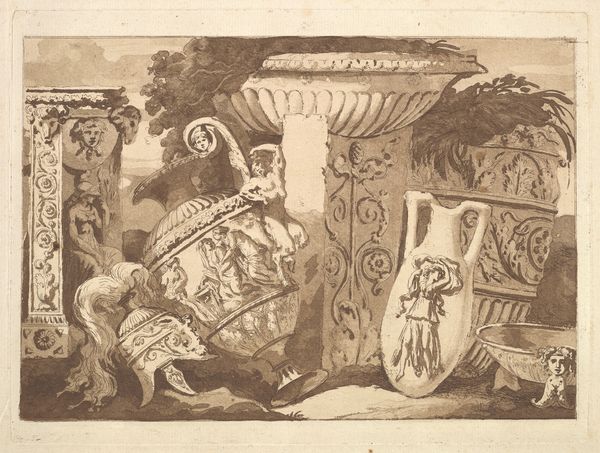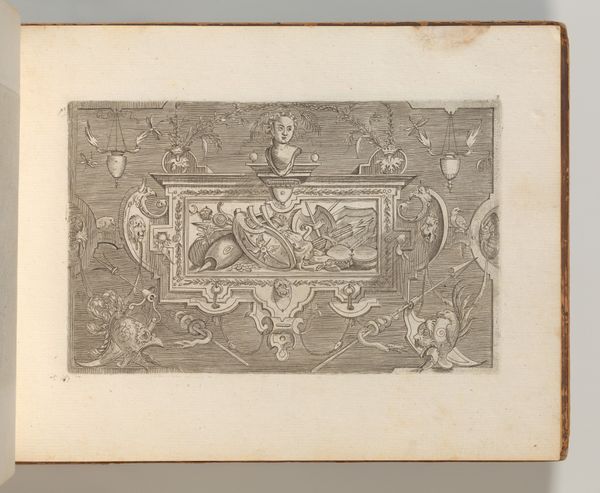
Marble relief in the Aldobrandini gardens near SS. Domenico e Sisto, Monte Magna, Naples 1769 - 1778
0:00
0:00
print, relief, marble, engraving
#
neoclacissism
# print
#
relief
#
landscape
#
classical-realism
#
history-painting
#
marble
#
engraving
Dimensions: 385 mm (height) x 650 mm (width) (plademaal)
Curator: Here we have Giovanni Battista Piranesi’s "Marble relief in the Aldobrandini gardens near SS. Domenico e Sisto, Monte Magna, Naples," created between 1769 and 1778. Editor: Immediately striking. There's a restrained elegance in its monochromatic palette, yet the relief itself conveys a depth that suggests dynamic interplay between light and shadow. Curator: It depicts, as the title suggests, a marble relief. Piranesi, known for his engravings of Roman antiquities, captured this piece located in the Aldobrandini gardens in Naples. These gardens themselves are steeped in history and power, commissioned by the Aldobrandini family, figures intimately involved in papal politics. Editor: The symmetry is remarkable, bordering on the dogmatic. Winged figures, perhaps representing Cupid or Psyche, frame what appears to be an ornate vase or urn. The line work, intricate but ordered, establishes a rigorous structure and an immediate visual calm. Curator: That symmetry you're observing does speak to the prevailing Neoclassical aesthetic, and within the context of Naples at the time, then part of the Bourbon Kingdom, you had powerful families like the Aldobrandini consciously evoking and recreating symbols of Roman imperial power through their patronage. The sculpture then functions almost as a statement about lineage, class, and influence. Editor: Note also how the figures and the urn compete for dominance within the frame. They are almost equal in scale, which introduces an interesting tension between the allegorical and the purely decorative. The texture itself almost seems to suggest a kind of restrained vitality, doesn’t it? The flowers are stylized, yes, but you feel the possibility of growth embedded there. Curator: The print format in itself speaks volumes about dissemination and accessibility. Piranesi was keenly aware of the market and eager to showcase, catalogue, and, in a sense, legitimize the visual history of the classical world but also to shape contemporary understandings of power and the legacies of patronage. Editor: The relief then, reproduced and distributed, becomes less about simple aesthetics, more about an argument concerning influence and even historical control, doesn’t it? Curator: Precisely. Looking closer helps reveal so many nuances— the relief's composition is a statement about 18th-century social hierarchies. Editor: Well, whether perceived as a simple decorative form or a politically- charged historical narrative, Piranesi's attention to form grants us considerable insights.
Comments
No comments
Be the first to comment and join the conversation on the ultimate creative platform.
